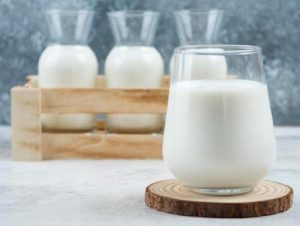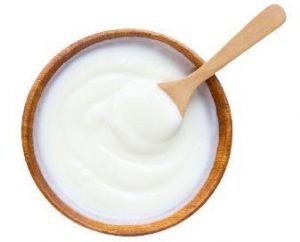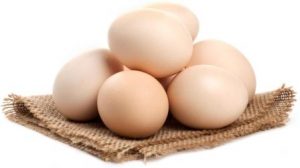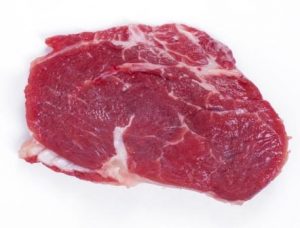Glutamine is the most abundant non-essential amino acid produced in our body. Many research shows that Glutamine helps boost immunity and preventing muscle loss.
But severe illnesses, aging, muscle loss, intense workouts, and wounds can cause Glutamine deficiency. At such time, consumption of foods that are rich sources of Glutamine becomes necessary.
However, most of us lack knowledge of natural sources of Glutamine. Well, worry not! This article will provide you the info on foods that are incredibly rich in Glutamine. But first, let’s have a look at need-to-know information on Glutamine.
What is Glutamine?
Glutamine is a conditionally essential amino acid. Well, usually it is non-essential but, in some situations such as physical stress and aging, they become essential amino acids which means you have to consume them through diet.
The primary purpose of Glutamine is to build blocks of proteins. It is also vital in the process of transporting nitrogen to tissues.
Glutamine has also become popular as a form of supplement in bodybuilders and athletes as it provides strength to muscles and increases the recovery of muscle cells and tissues.
Well, we will go to benefits as well, but now it’s time to look at natural sources of Glutamine.
6 Best Food Sources of Glutamine
Most people directly consume glutamine supplements if they lack the essential proteins. However, instead of supplements, you can consume many natural sources of Glutamine.
Here’s the list of best food sources of Glutamine:
1. Seafood

Do you know, seawater fish are more nutritious than freshwater fish? It is true! So, it also means that the former contains more Glutamine than the latter.
Other seafood such as salmon, tuna, mussels, shrimps, and crabs are very rich in Glutamine that can fill the gap in your body. You can steam, grill, or add it to the salads.
However, do not overcook them as food will lose all its nutritional value.
2. Milk

Milk is another excellent source of Glutamine. (100 grams of milk contains 0.4 g of Glutamine)
It helps in promoting the production of glutathione—an antioxidant. In addition to Glutamine, milk also is rich in calcium, protein, and potassium.
You can consume it in the morning or drink it with whey protein after doing the workout.
3. Red Cabbage

Red cabbage is one of the powerful sources of Glutamine. It helps build immunity and improve overall health.
However, if you cannot find red cabbage in your area, then no problem! You can consume cabbage as well; it is also a good source of Glutamine.
Keep in mind, always eat cabbage/red cabbage in raw form by adding it to salads. Once you cook cabbage, it will lose Glutamine.
4. Yogurt

Yogurt is very rich in Glutamine and other proteins, especially if made up of grass-fed milk. And try to avoid yogurt available in the market as it has low glutamine content.
It has numerous health benefits, such as improving digestion and gut bacteria count. Also, it is suitable for weight loss and increasing lean muscle mass due to its low-calorie content.
You can add it in salads instead of mayonnaise, consume it as snacks, or eat it with chapatis like a desi.
5. Eggs

One single egg contains 0.6 grams of Glutamine. That’s a lot! Apart from Glutamine, they are a rich source of vitamins, omega-3 fatty acids, and other essential amino acids.
Depending on your daily requirement, you can consume eggs in the morning or at lunch to provide your body amino acids, including Glutamine.
You can eat eggs in any manner you want! It means that you can boil it or cook an omelet; it’s your choice.
6. Beef

Beef contains the highest concentration of Glutamine, i.e., 1.2 g per 100 grams of meat. Beef helps you provide strength and mass to muscles. It also helps boost immunity and energy levels in our bodies.
However, beef is a political food! Few countries like India have banned beef. (You can substitute beef with chicken)
So, all the foods mentioned above are incredibly rich in Glutamine. Now, let’s see what benefits they will provide you.
What are the Benefits of Glutamine?
Glutamine provides numerous benefits for the good health of our body. Some of the benefits are following:
- It maintains the pH balance of our bodies.
- Glutamine helps increase strength and lean muscle mass, i.e., it improves muscle gain and enhances performance during the workout.
- It plays a vital role in boosting immunity as it works as an essential fuel source for immune cells, including white blood cells and some intestinal cells.
- It also maintains a proper balance between the intestines and the rest of your body.
- Apart from physical health, it also improves mental health by increasing learning and alertness properties.
So, overall, Glutamine is essential for our good health from the brain to toe! However, there are some cases when one should consume Glutamine—both food sources and supplements.
When to Avoid Food High in Glutamine?
Despite having many benefits, you should stop consuming rich food sources of Glutamine if you are suffering from the following diseases:
- Kidney or Liver Disease
- Cancer
- Reye’s Syndrome
Besides the above diseases, if you are allergic to Glutamine rich foods or have any side effects such as nausea, vomiting, or joint pain, you should consult a doctor.
Otherwise, you are all welcome to consume foods that are rich in Glutamine!
EndNote:
As a part of a healthy balanced diet, you should include the glutamine-rich foods mentioned above. They will help you provide overall good health and strength to the body.
However, it becomes difficult to consume all the rich food to get a few amounts of Glutamine. That is why we suggest you take post-workout glutamine supplements with glutamine-rich foods to avail all the benefits in less time.
That’s all for today, guys! Was the article helpful? Comment your queries or any further suggestions.


